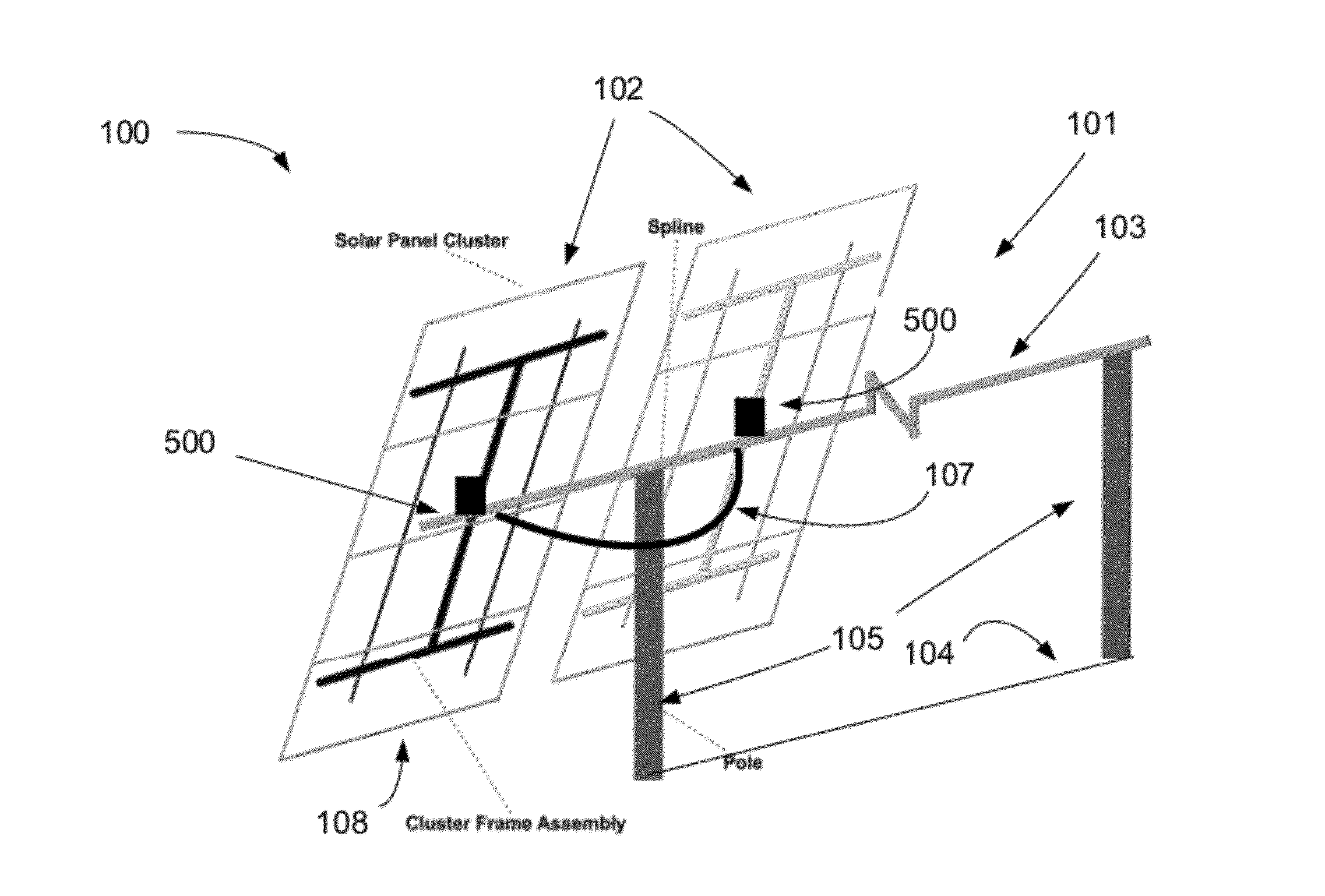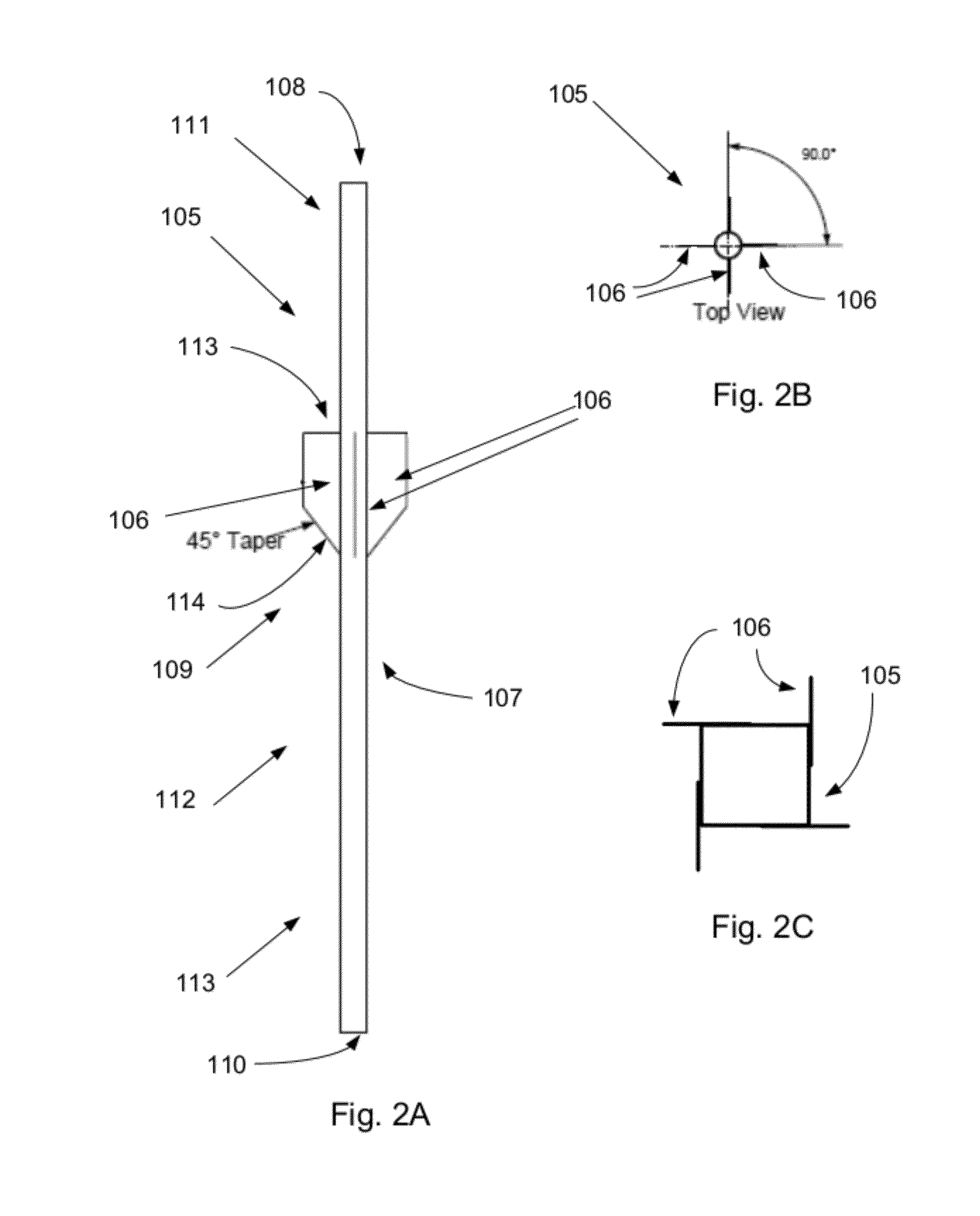Adjustable Racking System for Solar Array and Method of Construction of a Solar Array
a solar array and adjustable technology, applied in the direction of heat collector mounting/support, solar thermal energy generation, etc., can solve the problems of difficult and expensive structure installation, and limited solar energy absorption potential, so as to control the amount of sunlight reaching, the effect of minimising the negative environmental impa
- Summary
- Abstract
- Description
- Claims
- Application Information
AI Technical Summary
Benefits of technology
Problems solved by technology
Method used
Image
Examples
Embodiment Construction
[0008]In a first embodiment, there is provided a yoke for mounting a solar panel or solar panel cluster to a spline on a solar panel mounting structure. The yoke includes at least a base portion, with a panel mounting frame coupled to the base portion, and arm portions coupled to the base portion and arranged to movably engage the spline, along with at least one solar panel mounted to the panel mounting frame.
[0009]In some embodiments, the panel mounting frame includes a base bracket and a panel bracket. In various embodiments, the base bracket is fixedly attached to the base portion. In some embodiments the panel bracket is rotatably coupled to the base bracket. In some embodiments, the panel bracket includes notches to engage a solar panel.
[0010]In various embodiments, the base portion has at least one securing arm extending around the circumference of the spline, while in some embodiments the at least one securing arm is a U-shaped member secured to the base portion, such that an...
PUM
| Property | Measurement | Unit |
|---|---|---|
| diameter | aaaaa | aaaaa |
| diameter | aaaaa | aaaaa |
| size | aaaaa | aaaaa |
Abstract
Description
Claims
Application Information
 Login to View More
Login to View More - R&D
- Intellectual Property
- Life Sciences
- Materials
- Tech Scout
- Unparalleled Data Quality
- Higher Quality Content
- 60% Fewer Hallucinations
Browse by: Latest US Patents, China's latest patents, Technical Efficacy Thesaurus, Application Domain, Technology Topic, Popular Technical Reports.
© 2025 PatSnap. All rights reserved.Legal|Privacy policy|Modern Slavery Act Transparency Statement|Sitemap|About US| Contact US: help@patsnap.com



